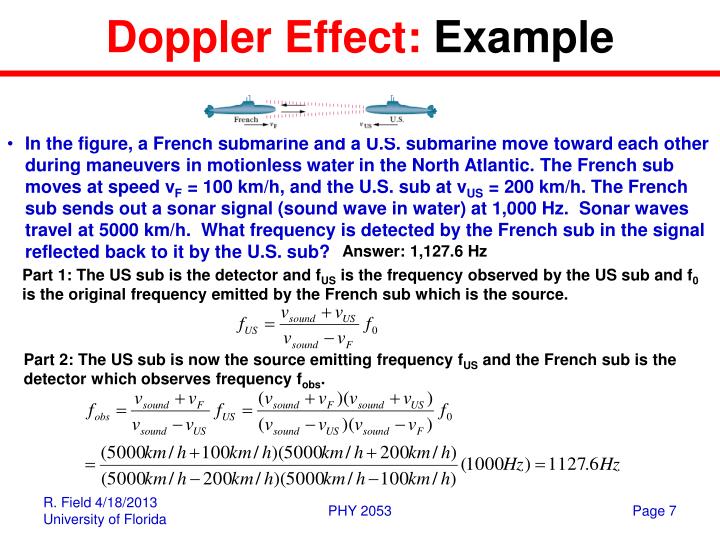

The result will be equal to 676 Hz.įinally, subtract one value from the other to find the change in frequency: 727 - 676 = 51 Hz. Ambulance velocity will be positive (as it now moves away from you), and the bicycle velocity will be positive as well (because you move towards the source).Ĭalculate the observed frequency of sound after the ambulance moves past you. You can check in our Doppler effect calculator that the result will be equal to 727 Hz.ĭecide on the signs of both velocities after the ambulance passes you. Let's take 700 Hz.ĭecide on the signs of both velocities before the ambulance passes you: are they negative or positive? Ambulance velocity will be negative (as it moves towards you), and the bicycle velocity will be negative as well (because you move away from the source).Ĭalculate the observed frequency of sound before the ambulance moves past you using the Doppler shift formula. Let's assume that the ambulance travels at 60 km/h and the bike at 15 km/h.ĭetermine the sound frequency. What is the change in sound frequency after it passes you?ĭetermine the speed of both the ambulance and the bicycle. You can hear the siren of the ambulance behind you as the ambulance approaches you. You are riding a bicycle along the road, going in the same direction as the ambulance. Assume a train with a 150-Hz horn is moving at 35.Let's analyze a more complex example of the approaching ambulance. Substituting this into the Doppler effect formula, we get the equation of the Doppler effect when a source moves towards an observer at rest-į L = \(\frac \)) 1437.54 In this case, the velocity of the observer velocity is zero, so v o is equal to zero. f s is the frequency of sound emitted by the source (Hz, or 1/s)ĭoppler Effect Formula a) Source Moving Towards the Observer at Rest.v s is the velocity of the sound source (in m/s).v is the speed of sound in the medium (in m/s).f L is the frequency of sound that the listener perceives (Hz, or 1/s).(1 Hz = 1s -1 = 1 cycle/s).Īs a result, the formula for the doppler effect is: The frequency of the sound is measured in Hertz (Hz) where one Hertz is one cycle per second. When the listener and the source get near enough, the frequency heard by the listener is higher than the sound produced by the source. When the listener and the source moves away from each other, the frequency heard by the listener is lower than the frequency heard by the source. If the source of the sound and the listener move in relation to each other, the sound heard by the listener changes. Read More: Coherent and Incoherent Addition of Waves Doppler effect is known to our encounters with sound waves.The Doppler effect may be seen in any wave type, including water waves, sound waves, and light waves.

It is crucial to note that the impact isn't caused by a change in the source's frequency.As for the observers from whom the source is receding, a downward shift in frequency will be observed.When the source of the sound waves is moving towards the observer, an upward shift in frequency is observed.When the source and the observer move relative to each other, the frequency that is observed by the observer (f a) is different from the actual frequency that is produced by the source (f 0).The Doppler effect is a phenomenon caused by a moving wave source that causes an apparent upward shift in frequency for observers who are approaching the source and a visible downward change in frequency for observers who are retreating from the source. The Doppler Effect, also known as the Doppler shift, is the result of a change in the frequency of sound waves caused by movement.


 0 kommentar(er)
0 kommentar(er)
